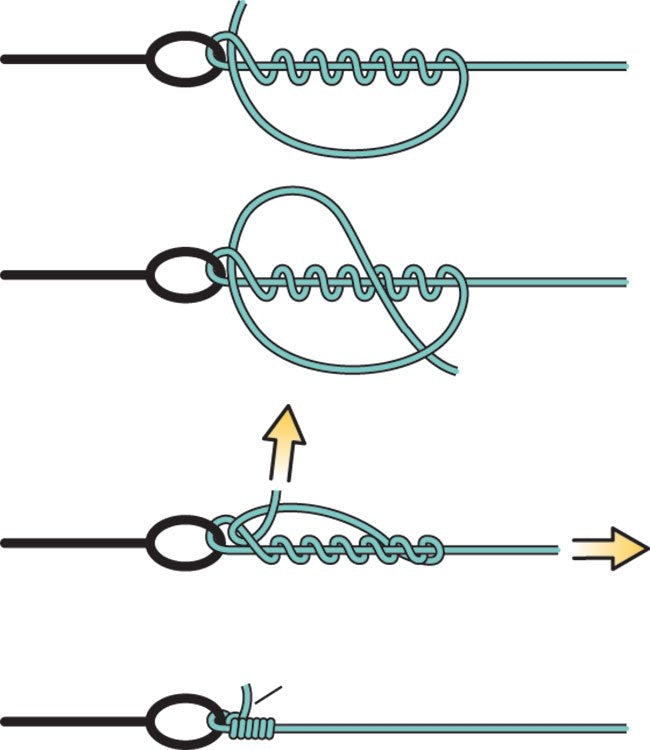Every year, 40 million people take rod and reel to the waters to spend a sunny afternoon with friends and family. Perhaps you have chosen to revisit the sport you haven't tried in years, or maybe you’re trying it for the first time. Either way, there’s no need to feel overwhelmed as you get prepped. We’ve pulled together everything you need to know before you head out on the water.
To get started with freshwater fishing, make sure you’ve got these items:
-A fishing rod and a fishing reel -A state fishing license
-4-12 lb test fishing line
-Fishing hooks
-Fishing Weights
-Plastic bobber or a cork
-Live bait or fishing lures
The Clinch Knot Improved

(Diagram, courtesy of Boys’ Life)
1) Pass a line through the hook eye, and the tag end will make five turns over the standing line.
2) Insert this loose end of the line between the eye and loop.
3) Bring the tag through the second loop that has been formed, and wet the line to help with tightening the knot slowly.
4) Pull tight. You want this knot as tight as possible because if a big enough fish latches on and puts up a fight, you don't want to lose it by him tearing the hook away. 5)Setting up the Rod: Hook, Line, Sinker
Now that you have the hook tied on, you will need to tie one or two sinkers onto the line, and you will put this between 6 inches to 12 inches above the hook. The weight keeps the lure down in the water, and it weighs down the bobber enough so that you can spot it goes under. With most bobbers, they will attach to the fishing line, and you can put these on quite easily.
The Parts of a Fishing Boat
You can buy boats in a variety of styles and shapes, but you will find that the terms for the different parts of a fishing boat have remained quite consistent. Some of the terminologies include:
-The bow (front of the boat)
-Stern (rear of the boat)
-Propeller (moves the boat forward)
-Starboard (right side)
-Port (left side)
-Hull (overall vessel / shell)
-Cleat (metal fitting, typically on a dock, where you fasten a rope to secure the boat)
-Gunwale (upper edge of the boat)
Safety Takes a Top Priority
One of the most important small boat fishing tips is safety. For example, a first-timer should always fish with a buddy who can lend a hand in the event of an emergency. You also have to be careful how you cast your line so that you never hook someone else in the boat. Always look around to ensure you have the maximum level of safety before a cast. Finally, you should always wear a Coast Guard approved life-jacket whenever you're out on the water.
Good Conservation Practices
Good fishermen have a respect for nature and the waters. They also display a respect for the natural resources, and they’ll take actions to conserve these waters for future generations. For example, if a fish is too small, you should always release it back into the waters for it to grow and be caught at a later date. The fishing laws in each state usually exist for a reason. In many cases, for example, you might have size restrictions, where you can only catch one or two fish past a certain size—northern pike, for example. This helps keep the water and the ecosystem healthy and thriving.
It might sound like common sense, but never throw plastic containers or garbage into the water. Fishing line can also be exceptionally dangerous to birds and other wildlife. For that reason, you should always be sure to pick it up and recycle in the proper place.
These are all small boat fishing tips that will hopefully help you to have a positive experience out on the waters. One last tip: remember to remain fairly quiet so that you don't scare away the fish!




